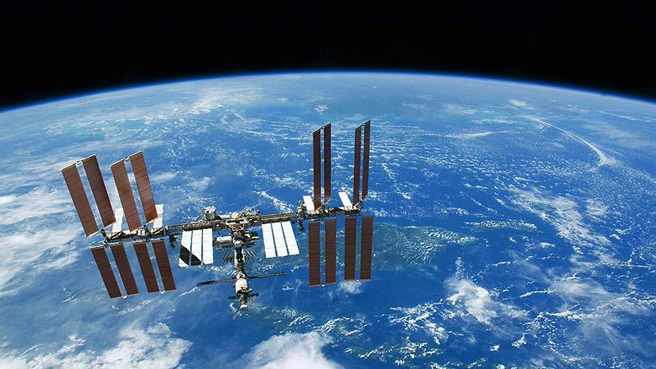-
Featured News
Mayo Clinic researchers to study if hands-free camera in space can monitor vital signs
 JACKSONVILLE, Fla.— Astronauts intermittently monitor their vital signs in space for experiments, partly because continuous monitoring requires multiple contact points on the body and the use of cumbersome batteries. Now, researchers at Mayo Clinic’s Florida campus are studying a device to be launched into space that is designed to use a small, inexpensive camera fitted with specialized software. This software has the potential to monitor an astronaut’s vital signs continuously and contact-free from feet away, saving precious cargo space and leaving astronauts unencumbered.
JACKSONVILLE, Fla.— Astronauts intermittently monitor their vital signs in space for experiments, partly because continuous monitoring requires multiple contact points on the body and the use of cumbersome batteries. Now, researchers at Mayo Clinic’s Florida campus are studying a device to be launched into space that is designed to use a small, inexpensive camera fitted with specialized software. This software has the potential to monitor an astronaut’s vital signs continuously and contact-free from feet away, saving precious cargo space and leaving astronauts unencumbered.
As part of its inaugural mission, Exos Aerospace Systems & Technologies Inc., will take a version of the vital signs monitoring camera to space in its test of a SARGE suborbital rocket. The rocket is scheduled to be launched on Aug. 25 from Spaceport America in New Mexico near the U.S. Army’s White Sands Missile Range.
The Center for Applied Space Technology, a Florida not-for-profit organization dedicated to advancing the science of space travel, is coordinating the flight opportunity. Exos is donating the ride, and NASA is donating use of the canister that will hold the camera.
For the purposes of this study, the camera will not be pointed at a human due to the unmanned flight. Rather, the study will assess the movements of a second hand of a watch that will float within the canister.
“This can simulate how well the camera can pick up minute movements of the second hand while on a watch face floating in zero gravity,” says Michelle Freeman, M.D., a pulmonologist and critical care specialist at Mayo Clinic’s Florida campus. “In humans, the device tracks subtle pulsations in the blood vessels of the skin, telling us heartbeat and respiration rate. The second hand of the watch will be our pulse for this trip.”
The second phase would be to test the camera on humans in simulated microgravity on a parabolic flight, and then potentially on astronauts onboard the International Space Station or commercial space ventures.
“Not only will this tool help ensure the health of astronauts and space tourists, on Earth, it could be beneficial in telemedicine and home health care,” says William D. Freeman, M.D., a neurologist at Mayo Clinic’s Florida campus who is partnering with his wife Dr. Michelle Freeman on the monitoring project.
The technology is being developed by Oxehealth, a spinoff from Oxford University in the U.K. The Drs. Freeman will work with this team to help evaluate the health monitoring capability and vital sign signals in microgravity.
The software works by finding the patient in the camera lens, locating a region of interest, such as the face, and analyzing the color change in the face from each time the heart beats and provides blood flow. The device also can determine breathing rate. The technology’s accuracy has been demonstrated in research studies in a wide range of healthcare settings in the UK, including acute and mental health hospitals. A version of the device is currently undergoing medical device certification before being placed on the market in Europe.
“Imagine how helpful this technology would be for remote health monitoring of astronauts and tourists traveling into space through programs such as Elon Musk’s Space X mission to Mars, Sir Richard Branson’s Virgin Galactic, and Jeff Bezos’ Blue Origin,” Dr. William D. Freeman says. “Ultimately, what we prove works during extremes of gravity and in microgravity someday will have direct application to remote health monitoring for patients on Earth.”
The Drs. Freemans say their work fits well with Northeast Florida’s burgeoning space industries, such as those at Cecil Spaceport here in Jacksonville, as well as the Kennedy Space Center in Cape Canaveral, Florida.
Mayo Clinic also has a long history of work in aeromedicine. Mayo Clinic scientists and physicians developed the G suit to protect fighter pilots in World War II from blacking out during extreme maneuvers. A SpaceX rocket launch from NASA’s Kennedy Space Center earlier in 2017 included a payload of several samples of donated adult induced-pluripotent stem cells from a research laboratory at Mayo Clinic’s Florida campus. Mayo researchers are analyzing these special cells, which are derived from the body’s fat tissue, to learn if they can be more quickly mass-produced in microgravity and used to treat strokes.
“So many things that have been developed for space have found wonderful uses on Earth — everything from scratch-resistant lenses and water purifiers to memory foam and GPS — as well as important insights into heart, lung and blood physiology and treatment,” says Dr. Michelle Freeman. “I think that when this continuous contact-free vital signs monitoring camera is fully functional, its uses will be limitless.”
Drs. Michelle and William D. Freeman are not supported by these industry collaborators. They are applying for NASA research funds.
###
About Mayo Clinic
Mayo Clinic is a nonprofit organization committed to clinical practice, education and research, providing expert, comprehensive care to everyone who needs healing. Learn more about Mayo Clinic. Visit the Mayo Clinic News Network.
Media contact:
- Kevin Punsky, Mayo Clinic Public Affairs, 904-953-0746, punsky.kevin@mayo.edu







